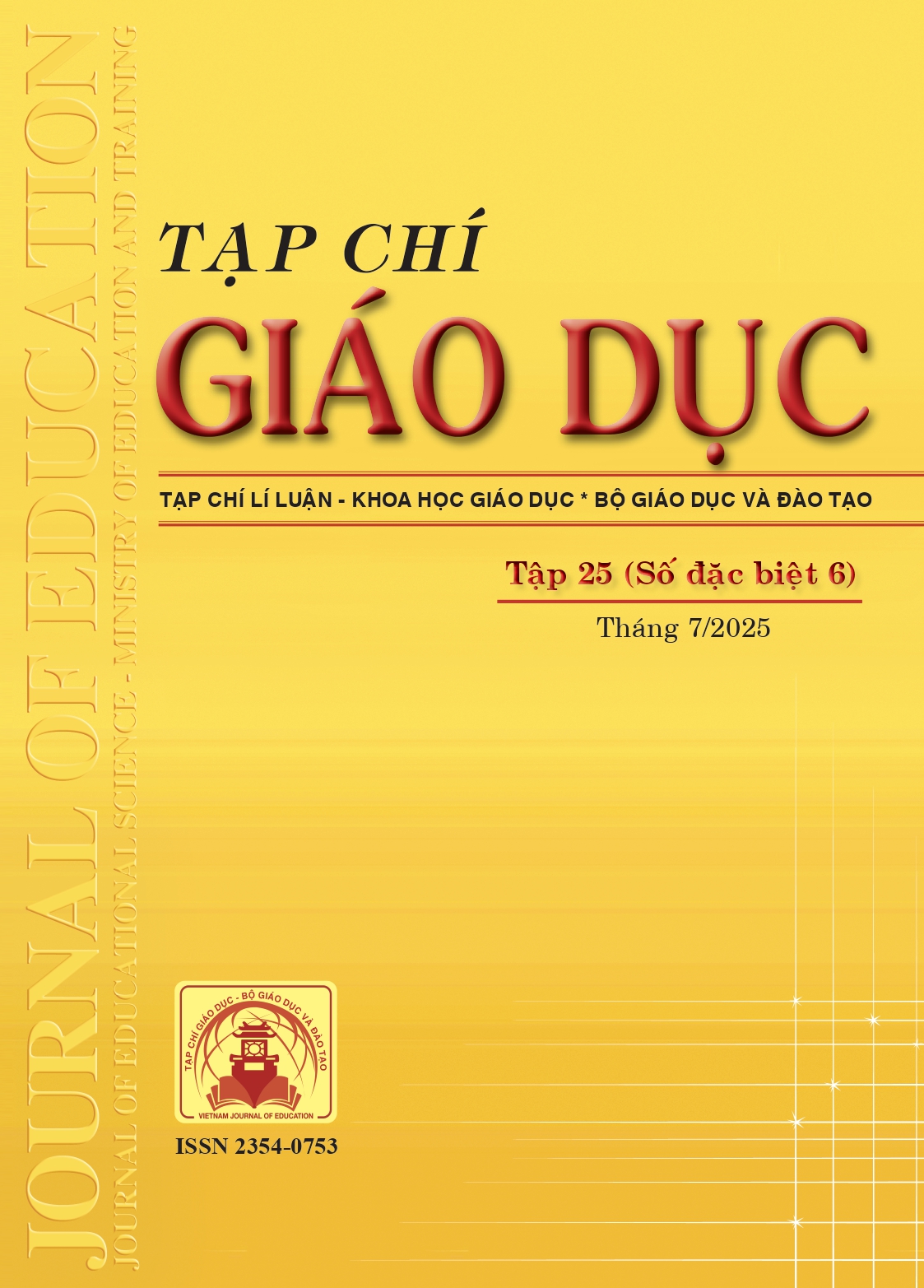Ứng dụng hoạt động mỹ thuật trong giáo dục hành vi cho trẻ rối loạn phổ tự kỷ: Một nghiên cứu trường hợp
Tóm tắt
Children with autism spectrum disorder (ASD) face numerous difficulties in learning and social integration, particularly due to challenging behaviors such as aggression, stereotypy, and self-injurious behavior. Art activities provide children with opportunities for self-expression, emotional regulation, and the development of essential social and communication skills through creative processes. This study employed a single-subject design, and the results demonstrated that through art-based activities - including theme-based painting, coloring, pottery, and clay modeling - the frequency of aggressive and stereotypic behaviors decreased, while cooperative behavior among children with ASD improved. It is recommended to continue integrating such activities into behavioral education and to conduct long-term studies to assess the sustainability of these interventions, especially in real-world educational settings. The findings are consistent with those reported by Khadar et al. (2017) which believe that art helps release negative emotions and increase the ability to self-regulate behavior.
Tài liệu tham khảo
American Psychiatric Association (2013). Diagnostic and statistical manual of mental disorders (5th ed.). https://doi.org/10.1176/appi.books.9780890425596
Baldwin, J. D., & Baldwin, J. I. (2001). Behavior principles in everyday life (4th ed.). Prentice Hall.
Conde, J. M. (2006). Art as a tool to support collaborative behaviors in children with autism. Journal of Artistic Development, 12(2), 44-61.
Didden, R., Korzilius, H., Stubbe, T., & Curfs, L. M. G. (2012). Meta‐analytic review on treatment effectiveness for problem behaviors in children with autism spectrum disorder. Journal of Autism and Developmental Disorders, 42(12), 2517-2529. https://doi.org/10.1007/s10803-012-1524-1
Khadar, M., Babapour, J., & Sabouri Moghaddam, M. (2017). Emotional Expression in Children with ASD through Painting. Journal reference.
Koegel, R. L., & Koegel, L. K. (2006). Pivotal response treatments for autism: Communication, social, & academic development. Paul H. Brookes Publishing.
Ledford, J. R., & Gast, D. L. (2018). Single case research methodology: Applications in special education and behavioral sciences (3rd ed.). Routledge.
Lord, C., Risi, S., Lambrecht, L., Cook, E. H., Leventhal, B. L., DiLavore, P. C., Pickles, A., & Rutter, M. (2000). The Autism Diagnostic Observation Schedule-Generic: A standard measure of social and communication deficits associated with the spectrum of autism. Journal of Autism and Developmental Disorders, 30(3), 205-223. https://doi.org/10.1023/A:1005592401947
Malchiodi, C. A. (2006). The art therapy sourcebook (2nd ed.). McGraw-Hill.
Martin, N. (2009). Art as an early intervention tool for children with autism. Jessica Kingsley Publishers. https://uk.jkp.com/products/art-as-an-early-intervention-tool-for-children-with-aautis
Moghaddam, K., Ravarian, A., & Ershadi, F. S. (2019). Painting Therapy in Improvement of the Symptoms of Children with Autism Spectrum Disorder. Psychology and Behavioral Sciences, 8(3), 79-84. https://doi.org/10.11648/j.pbs.20190803.14
Myles, B. S., Smith, S. M., Tien, K. C., & Huggins, A. (2007). Positive behavior support in the classroom: Principles and practices. Autism Asperger Publishing Company.
Nozohour, N. (2024). The effect of painting-based art therapy on teacher-child relationship, aggression and social interactions of children with autism spectrum disorder. International Journal of Health and Education Studies, 2(2), 48-58. https://doi.org/10.63053/ijhes.72
Phạm Toàn (2021). Hướng dẫn chẩn đoán tâm lí tâm thần theo DSM -5. NXB Trẻ.
Pianta, R. C. (1992). The student teacher relationship scale. Charlottesville, NC: University of Virginia.
Võ Nguyễn Tinh Vân (2002). Để hiểu chứng tự kỉ. NXB Bamboo, Australia.
Yao, C., Jun, H., & Dai, G. S. (2023). Enhancing Social Responsiveness in Autism: The Impact of Art Therapy. KMAN Counseling and Psychology Nexus, 2(1), 27-33. https://doi.org/10.61838/kman.psynexus.1.2.5
Đã Xuất bản
Cách trích dẫn
Số
Chuyên mục
Giấy phép

Tác phẩm này được cấp phép theo Ghi nhận tác giả của Creative Commons Giấy phép quốc tế 4.0 .












